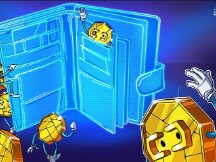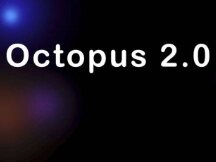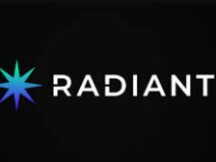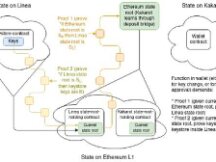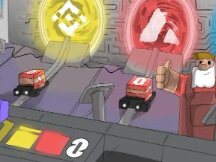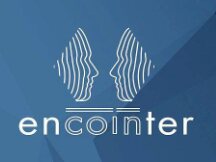How does Parachain measure millions of markets per second? How does cross-chain interoperability affect ecosystem activity?
1. What motivates you for the next four years to improve Polkadot? How do you think the introduction of Parachain will affect the cryptocurrency ecosystem?
Bill:What I enjoy most is what I don't know yet: What new paradigms can be created by connecting simple links?
I first introduced Bitcoin in 2011 and entered the market in 2012. Try to explain flash exchange, SRM, decentralized identification, etc. to get more than what I understand. The applicable status is completely broken due to the combination of smart contracts and smart contracts.
So I think we're going to see some really broad applications that take advantage of crosslinking. I have a few ideas, but I'm sure the best ideas are the ones I and others haven't considered.
In other words, I can't wait for Polka Dot this time around! For example, more decentralized on-chain control, nested parachaines, easy-to-use user interface, etc.
2. Parachain, like Enjin's Efinity, wants to measure millions of NFT markets per second at no cost. Since Polkadot translates a block in 6 seconds, I would like to know how Substrate achieves this. Does this break XCMP?
Bill:not sure. Parachain can have their own "sub-agreement" as long as they follow the approval of the link in the chain. In essence, it can be seen as a "small" contract, with more stable security when POV is included in the chain. It's a bit like in Bitcoin when a transaction is block conditioned, you can be sure it is almost complete, but you can only [complete] it to make sure it is complete after being conditioned in 6 blocks.
Gav recently did a great job explaining this issue on the Matrix channel.
Gavin: The security level of the parachain logic is the same as the security level of the Polkadot relay chain and the blocking time is 6 seconds. To do this more often, Parachain needs to be set up and run faster than the initial level of 6 seconds. Typically, sub-consensual issues are caused by dilution of security and support, as the security capacity guaranteed by the chain of relays must be reduced in exchange for protection by sub-consent.
This is similar to the Polkadot shared security model argument, and is also the reason why many channels that do not share security have drawbacks. However, Polkadot's unique design elegantly avoids these issues. The Parallel String Check (PVF) feature is a versatile and efficient solution that can be of great help in achieving optimal consistency.
The sub-consensus is ultimately protected by chain-of-relay validators, ensuring accurate and appropriate punishment for malicious participants in the sub-consent. This allows high performance and extremely high efficiency in terms of efficiency without diluting the capital of the relay chain (many times). The main step of this recommended model is that it operates efficiently from a power relay to a parachain device and uses the safety, performance and unique characteristics of the chain links only when necessary. This means that the same Parachain can not only have lower loop, but also protect multiple chains as recommended.
3. Are there any plans to improve the Polkadot.js experience? It is also abstract for the average user as well. We want to see the balance, and the location difference is confusing for new users.
Bill: Polkadot-JS applications work a lot, but they rarely focus on the "less abstract". It is important to note that the Polkadot-JS app is designed to make all strings possible from strings, and that there is a trade-off between function and ease of use.
In our community there are many third party wallets that offer simple and easy to use connections. See https://wiki.polkadot.network/docs/build-wallets
4. Can Parachain trade for free with Polkadot? What are the benefits of validator nodes when trading for free?
Bill: If it was Parachain's own design, it would be free. However, you must be careful not to become a vector of spam attacks. There are already (a minimum) free purchases on the relay channel. For example, getting the DOT from a presale is because you don't have an account and it is not possible to pay a fee until you have it.
Validators don't care what Parachain does. Because he only follows the rules of the chain of relays. Rewards for consumer goods are provided by DOT to Polkadot or Kusama or KSM in the chain links. It doesn't matter what Parachain does, because gift validators are relay chains and not parachains.
However, this raises the question of how to reward COLLATORS. While not all Parachain exchanges are free, we should be looking for other ways to reward collectors instead of sharing prizes. You can imagine many ways to network people, network usage, fares, lottery, etc. However, you have to be very careful when designing your parachain to stay with enough collectors!
The advantage of Polkadot is that these decisions depend on each parachain. We'll find some great ways to reward subsequent writers that I never thought possible.

Scan QR code with WeChat


